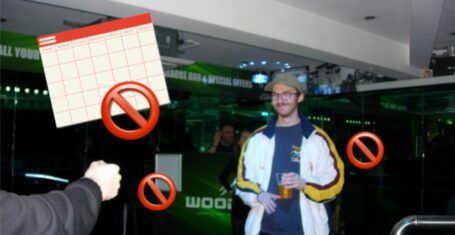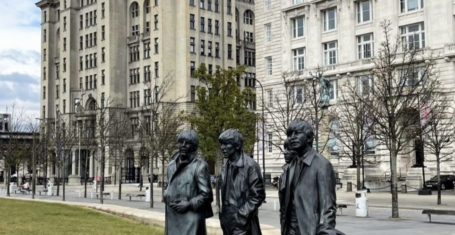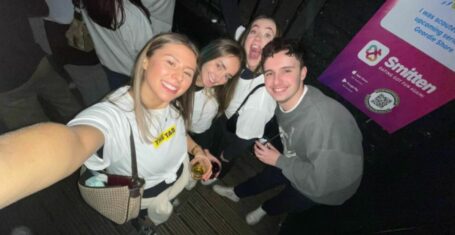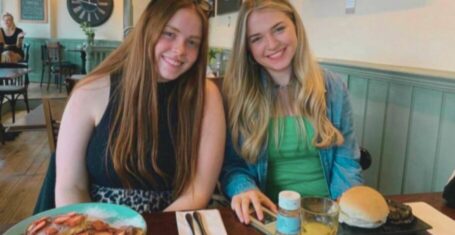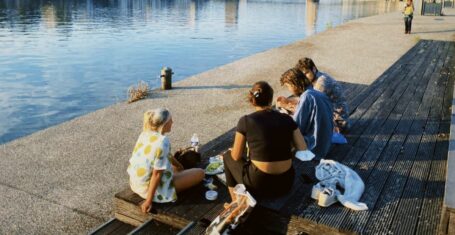
Building BNOC’s – the people behind campus erections
Think you’re the big dog of campus? Take a look at these historical BNOC’s to see who’s behind our famous uni hotspots
Ever wondered who the people are behind those names you hear all the time? Well, The Tab is here to help, with our guide to the biggest names on campus.
Sir Ralph Abercromby
One of the most beautiful parts of campus, Abercromby Square and gardens (thankfully nothing to do with that clothing brand) were named after Sir Ralph Abercromby of Tullibody (1734-1801). Ralph was a Scottish soldier and politician brought up in Alloa and educated at Rugby, and later Edinburgh University where he studied law. After finishing his studies, Sir Ralph joined the army where he rose up through the ranks and saw service in the Seven Year’s War.
Ralph also dabbled in politics, successfully standing for election in Clackmannanshire in 1774 (wherever that is). His opponent, Colonel James Francis Erskine, questioned the honour of Abercromby’s brother in law, and so Sir Ralph fought a pistol duel in his defence. What a gentleman! No one was injured; accept perhaps Erskine’s pride when Ralph won the seat. Sir Ralph proved to be a politician with a conscience (a rare occurrence) but found that his heart was not in politics. He chose not to stand for re-election in 1780 and retired to family life -he had seven children with his wife so would have certainly had his hands full!
In later life, Sir Ralph was sent to Egypt to destroy the army left by Napoleon Bonaparte. He successfully defeated an attack by the French but his army sustained heavy losses and he mortal wounds. Sir Ralph died on board HMS Foudroyant and the square and gardens are named after him in remembrance.
The ultimate sunbathing spot
Augustus John
Despite its fairly modern and rather brutal exterior, the Augustus John, or AJ to most of us, has a wealth of history behind it. The pub is named after the Welsh artist Augustus Edwin John (1878-1961) who was a flamboyant character to say the least!
Augustus was born in Tenby and attended Slade School of Art. While studying there, he suffered a head injury when swimming but fortunately he recovered. This seemed to have a dramatic effect on his artistic abilities which became much stronger and more pronounced.
Augustus became one of the leading lights in Post-Impressionism in the early 20th century and painted the portraits of people like Thomas Hardy, Dylan Thomas, W.B. Yeats, Winston Churchill and a host of others. At the time, his works were compared to Michelangelo, Gauguin and Matisse. High praise indeed!
A dashing fellow
Augustus was a Professor of Painting at Liverpool University (1901–4) and the ‘King of Bohemia’, as he was affectionately known, was infamous around campus (true BNOC status). Augustus had many celebrity friends and conducted numerous affairs, with rumours he fathered 100 children!
The pub was opened in memory of Augustus by his son, Admiral Sir Caspar John. It was recommended in CAMRA’s Good Beer Guide 2013 and was named CAMRA Cider Pub of the Year in 2012 for Liverpool and District. It is popular with students, lecturers and the public alike.
The post-exam haunt
Eleanor Rathbone
The Eleanor Rathbone building is named after an extraordinary woman who dedicated her life to social reform and to helping the women of Liverpool.
Eleanor Frances Rathbone (1872- 1946) was the child of William Rathbone IV, a philanthropist and social reformer. She grew up at the family home in Greenbank (your student halls, though probably a lot grander then!) and in London. After finishing her education at Oxford, Eleanor returned to Liverpool where she began her remarkable career.
From 1896, Rathbone served on the board of the National Union of Women’s Suffrage Societies (NUWSS). This led to the establishment of the Liverpool Women’s Suffrage Society in 1909 and the first Women’s Association in Liverpool in 1913, aiming to help women get involved in politics.
In 1909 she was the first women to be elected to Liverpool City Council. She served the Granby Ward as an Independent until 1935.
In 1929 Eleanor became an Independent MP for the Combined Universities and continued as one until her death. She was involved in helping refugees, women’s suffrage and human rights. Eleanor is most associated with the campaign to introduce Family Allowances. This faced a great deal of opposition but the Family Allowance Act was passed in 1945, eventually developing into Child Benefit.
So ladies (and gents), raise a toast to Eleanor Rathbone! As testament to her great work, Eleanor was voted the 45th Greatest Merseysider of all time by Liverpool Echo readers in 2014. A few other names in that poll might also ring a bell: William Gladstone (20), Lord Leverhulme (41), William Roscoe (54), William Rathbone (64) and Doctor Duncan (67).
Representing a true lady
Harold Cohen
Harold Leopold Cohen (1873-1936) was the son of a Lord Mayor of Liverpool, Alderman Cohen. Alderman was the nephew of the founder of Lewis’s (the department store), David Lewis. Harold went on to become the first chairman of Lewis’s.
It’s that building with the naked man on by the Adelphi, can’t miss it.
In 1936 Harold donated £100,000 to the university for a library to be built. In a sad turn of events, he died on the day he was to place the foundation stone and never saw the final building. In May two years later the library was opened by Earl Baldwin of Bewdley, more commonly known as Prime Minister Stanley Baldwin.
The HC was just one of the many things this man gave to UoL
Sydney Jones
The arts library is named after Sir Charles Sydney Jones (1872-1947). Sir Charles was a big name in Liverpool. He was a partner in a shipping line, High Sheriff of Lancashire in 1929, Lord Mayor of Liverpool from 1938 – 42 and was the Liberal MP for West Derby. He definitely kept himself busy!
In 1921 he donated five houses in Abercromby Square (the north side) to the university. Sir Charles also held notable positions here, such as the position of Treasurer (1918-1930), President of the Council (1930-36) and Pro-Chancellor (1936-42). He was knighted in 1937 and saw out his days in a house called ‘Eastbourne’ in Princes Park. When Sir Charles died in 1947, he left his estate of £40,000, his home and its contents to the university.
What would he think if he knew the SJ would soon become a hipster habitat?













